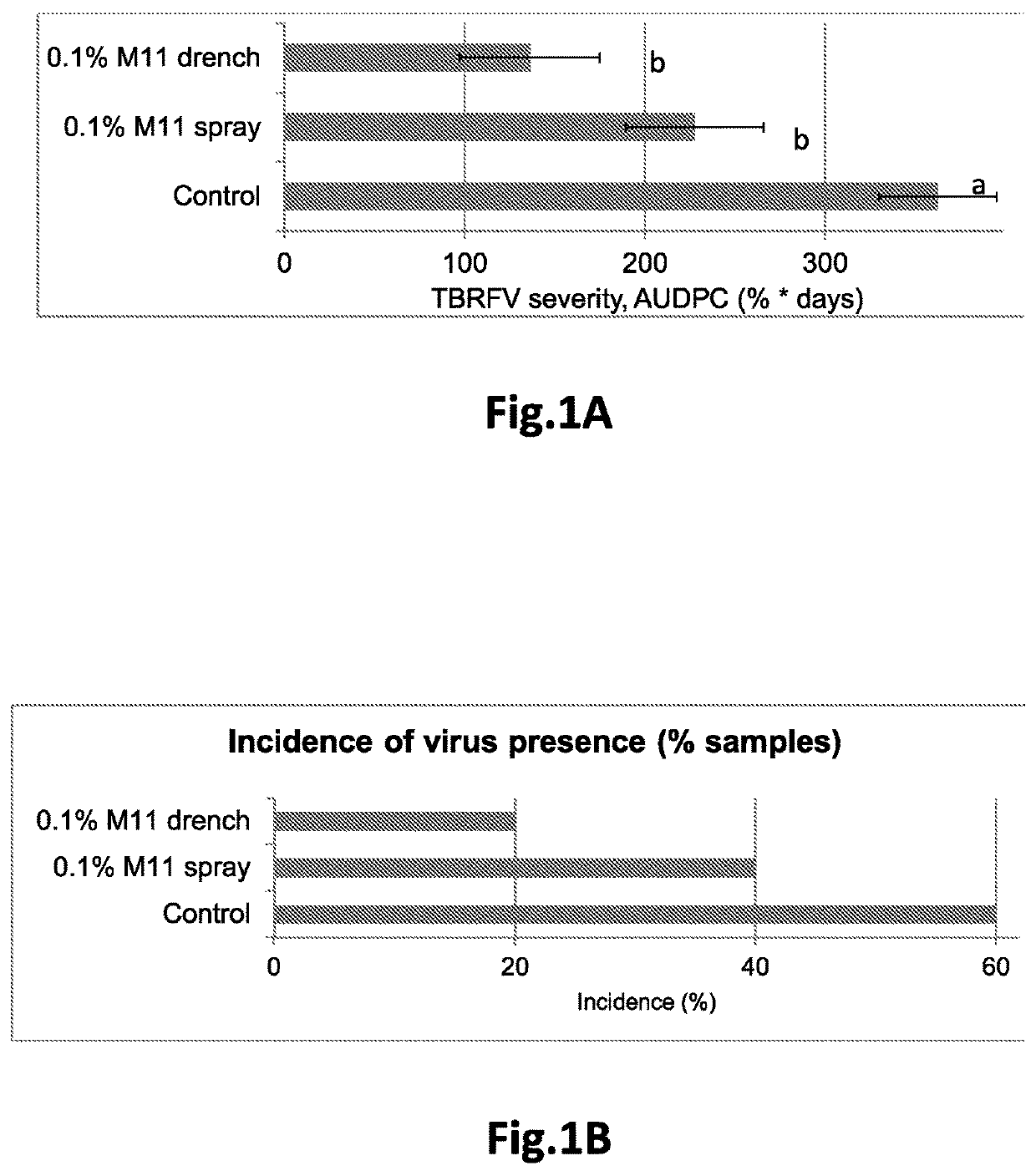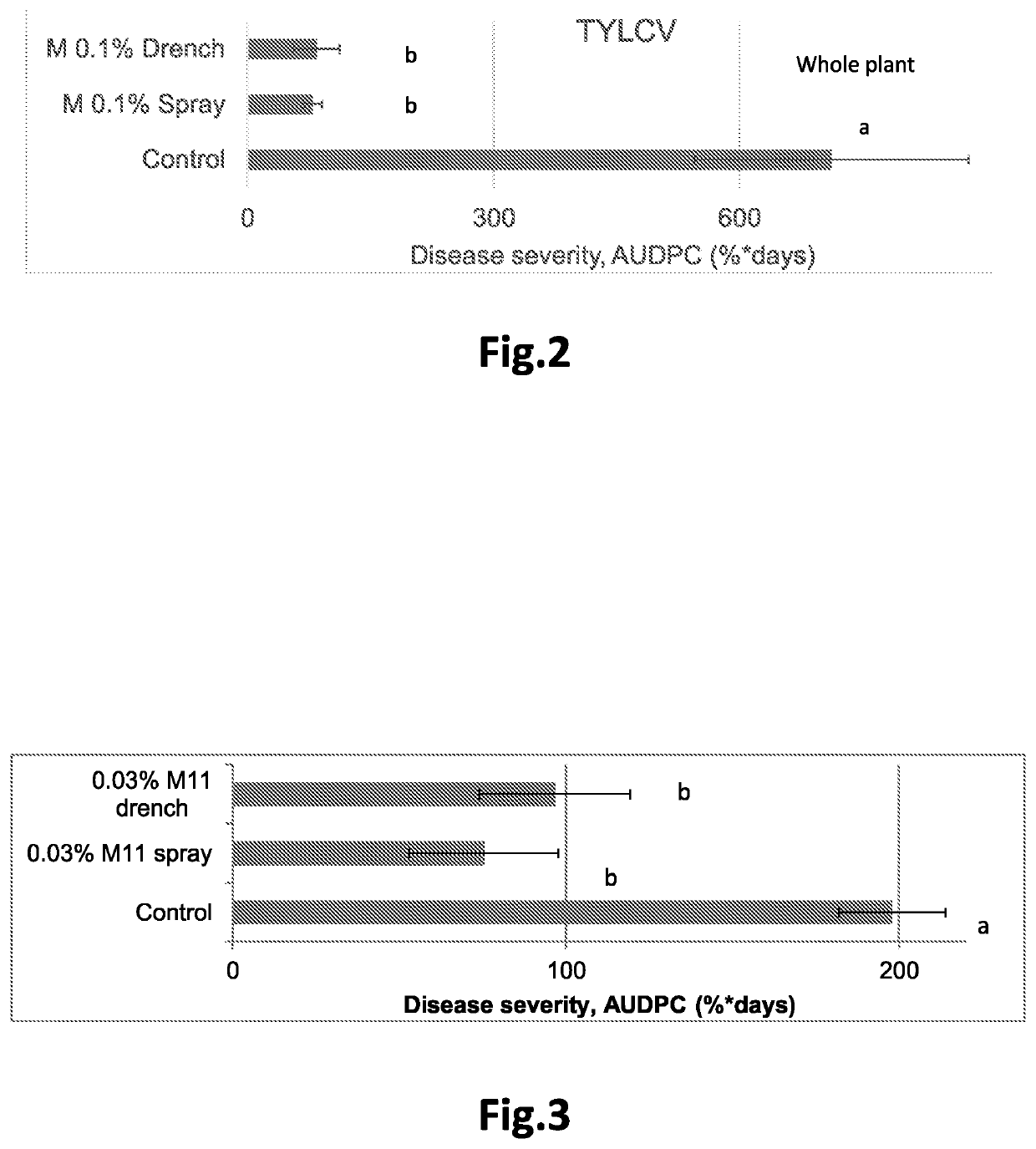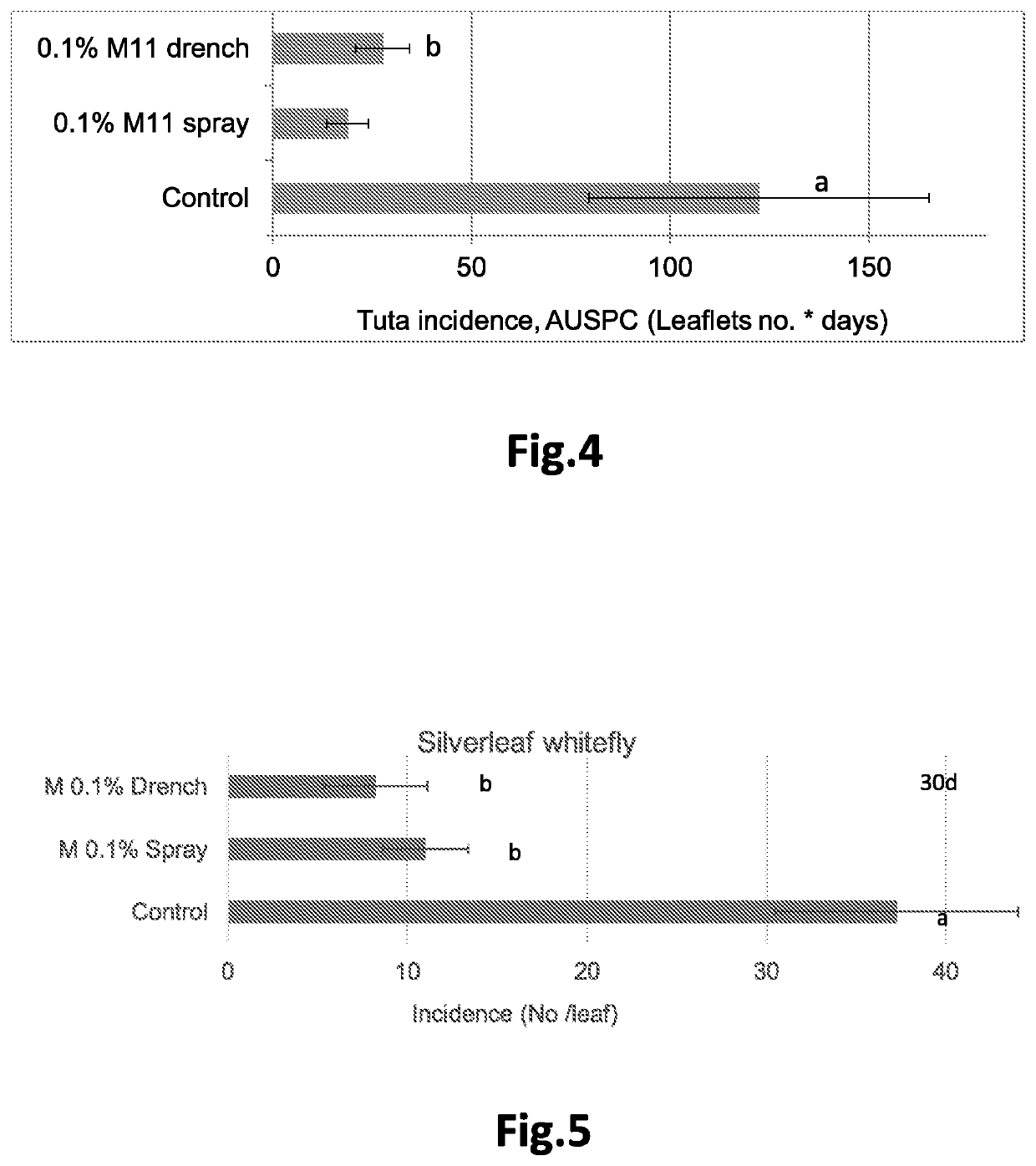Melanoidin compositions for protecting crops from nonfungal pests
- Summary
- Abstract
- Description
- Claims
- Application Information
AI Technical Summary
Benefits of technology
Problems solved by technology
Method used
Image
Examples
example 1
[0071]Following the Melanoidins Formation
[0072]The Maillard reaction is a class of non-enzymatic browning reactions that involves the interaction of reducing sugars and free amino acids or a free amino group of an amino acid that is a part of the protein chain. It is known that the reaction is affected by the temperature and composition of the reacting mixture, while both UV-absorbing and colorless intermediates are formed at the initial stages and the brown melanoidins, oligomeric or polymeric, at final ones. Melanoidins may be quantified by determining absorbance at 420 nm as a measure of ‘browning’ or by determining absorbance at other wavelength as a follow-up of the reaction. FIG. 8A shows the UV-Vis absorbance spectra of twelve samples obtained by i) heating a solid mixture of glucose and glutamic acid (called M11) in a molar ratio of 1:1, ground and heated in an oven at 170° C. for different time intervals: 0, 2, 4, 6, 8, 10, 10.5, 11, 12, 14, and 16 minutes; and ii) dispersi...
example 2
[0079]Plants and Diseases Evaluation
[0080]Generally, tomato plants were grown from seeds in a nursery and transplanted into 1 liter pots at 40 to 50 days after seeding. Plants were fertilized with NPK fertilizer (irrigation water aimed at total N, P and K concentrations of 120, 30 and 150 mg / L, respectively). Plants were usually maintained at 20 to 30° C. with natural light, and relative humidity of 50-90% in a pest- and disease-free greenhouse during the growth period and then transferred to an area where diseases were allowed to develop following pathogen infection on intact or detached leaves as described below. Disease severity was evaluated on each plant according to a % coverage key, whereby 0% is defined as all leaves with no disease symptoms and 100% is defined as all leaves fully covered by disease symptoms. This same coverage key is used throughout.
example 3
[0082]Tomato brown rugose fruit virus (TBRFV) was maintained on tomato plants. For the inoculation, the infected plant parts were blended to small pieced in tap water using a blender, and the crushed plant material was sprayed with carborundum dust on the treated tomato plants. The plants were kept in a greenhouse with 18-28° C. Disease severity was evaluated on each plant according to a % coverage key, whereby 0% is defined as all leaves with no disease symptoms and 100% is defined as all leaves fully covered by disease symptoms.
[0083]TBRFV causes symptoms that include a mosaic pattern on leaves accompanied occasionally with narrowing of leaves and with yellow spotted, wrinkled fruit. TBRFV is a virus that belongs to the Tobamovirus genus. It was found that spraying the melanoidin composition according to the invention on tomato plants or drenching the composition to the root zone of tomato plants significantly suppressed the severity of the virus infection as ma...
PUM
 Login to View More
Login to View More Abstract
Description
Claims
Application Information
 Login to View More
Login to View More - R&D
- Intellectual Property
- Life Sciences
- Materials
- Tech Scout
- Unparalleled Data Quality
- Higher Quality Content
- 60% Fewer Hallucinations
Browse by: Latest US Patents, China's latest patents, Technical Efficacy Thesaurus, Application Domain, Technology Topic, Popular Technical Reports.
© 2025 PatSnap. All rights reserved.Legal|Privacy policy|Modern Slavery Act Transparency Statement|Sitemap|About US| Contact US: help@patsnap.com



